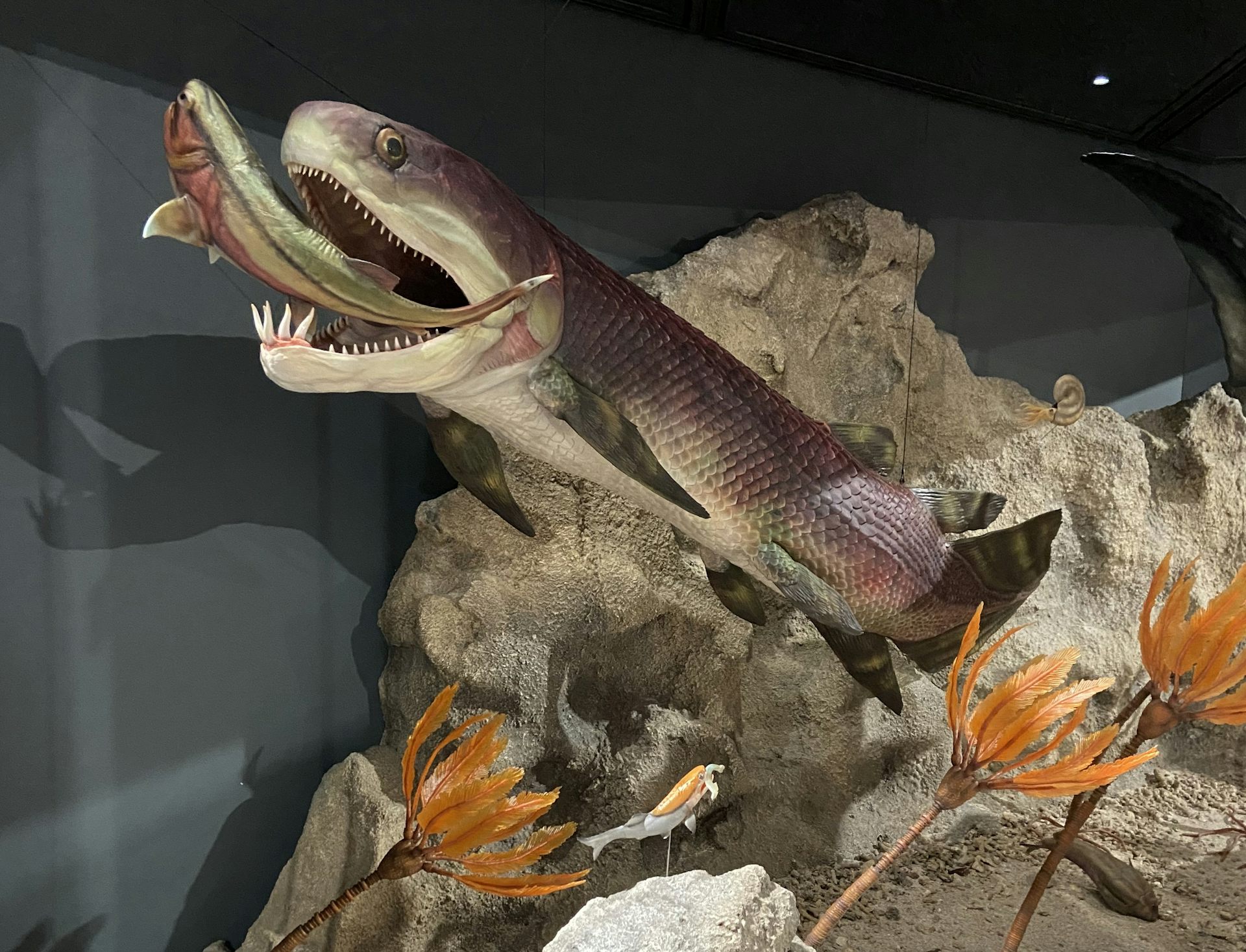
Although they probably don’t realise it, the function of the heart is as good evidence as it gets that the Bible wasn't written or inspired by the god described in it. No such omnipotent creator god would have assumed the heart was the seat of emotions when in fact it's simply a muscular pump for circulating blood around the body. Such silly mistakes are understandable if the Bible was written by ignorant people who lacked even basis science, of course, but not for any alleged creator of all life, including mammalian.
So, news that scientists have discovered the earliest fossil record of a mammalian heart from 380 million years ago, will come as a shock to Bible literalist creationists, if for no other reason than that it refutes the childish notion that the Universe was created by a creator god just a few thousand years ago, and the same creator created the human heart as the seat of emotion.
And Jesus answering saith unto them, Have faith in God. For verily I say unto you, That whosoever shall say unto this mountain, Be thou removed, and be thou cast into the sea; and shall not doubt in his heart, but shall believe that those things which he saith shall come to pass; he shall have whatsoever he saith.
Mark 11: 22-23

We found the oldest ever vertebrate fossil heart. It tells a 380‑million‑year‑old story of how our bodies evolved
;
Kate Trinajstic, Curtin University and John Long, Flinders University
In the limestone ranges of Western Australia’s Kimberley region, near the town of Fitzroy Crossing, you’ll find one of the world’s best-preserved ancient reef complexes.
Here lie the remnants of myriad prehistoric marine animals, including placoderms, a prehistoric class of fish that represents some of our earliest jawed ancestors.
Placoderms were the rulers of the ancient seas, rivers and lakes. They were the most abundant and diverse fishes of the Devonian Period (419–359 million years ago) – but died out at the end in a mass extinction event.
Studying placoderms is important as they provide insight into the origins of the jawed vertebrate body plan (vertebrates are animals with backbones). For instance, placoderms have revealed when the first jaws, teeth, paired skull bones and paired limbs evolved. They’ve also taught us about the origins of internal fertilisation and live birth in vertebrate evolution.
Now, in a paper published in Science, we detail our findings of the oldest three-dimensionally preserved heart from a vertebrate – in this case a jawed vertebrate. This placoderm heart is about 380 million years old, and 250 million years older than the previous oldest vertebrate heart.
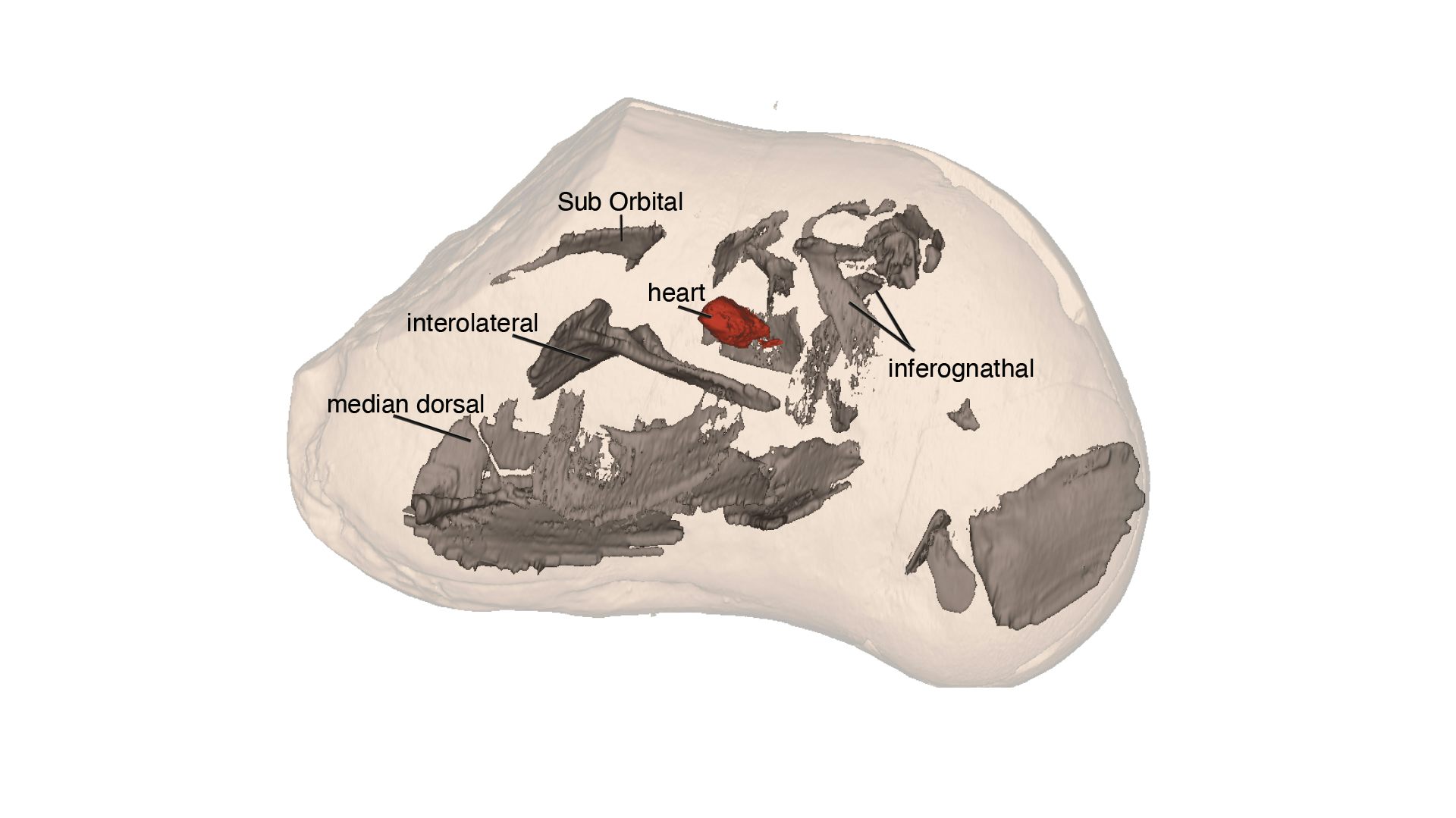
The 3D preserved heart of a placoderm fish from Gogo. The rock entombs the bone shown in grey, shown by neutron beam imaging, and heart in red.
Credit: Kate Trinajstic
Fish fossils from near Fitzroy Crossing were first reported from Gogo Station in the 1940s. But it wasn’t until the 1960s that beautiful 3D preservations were revealed, using a technique that removes rock from bones with weak acetic acid.
However, this technique proved to be a double-edged sword. While the fine details of the bony skeleton were uncovered, soft tissues in the fossils dissolved away. It wasn’t until 2000 that the first pieces of fossilised muscle were identified in placoderms.
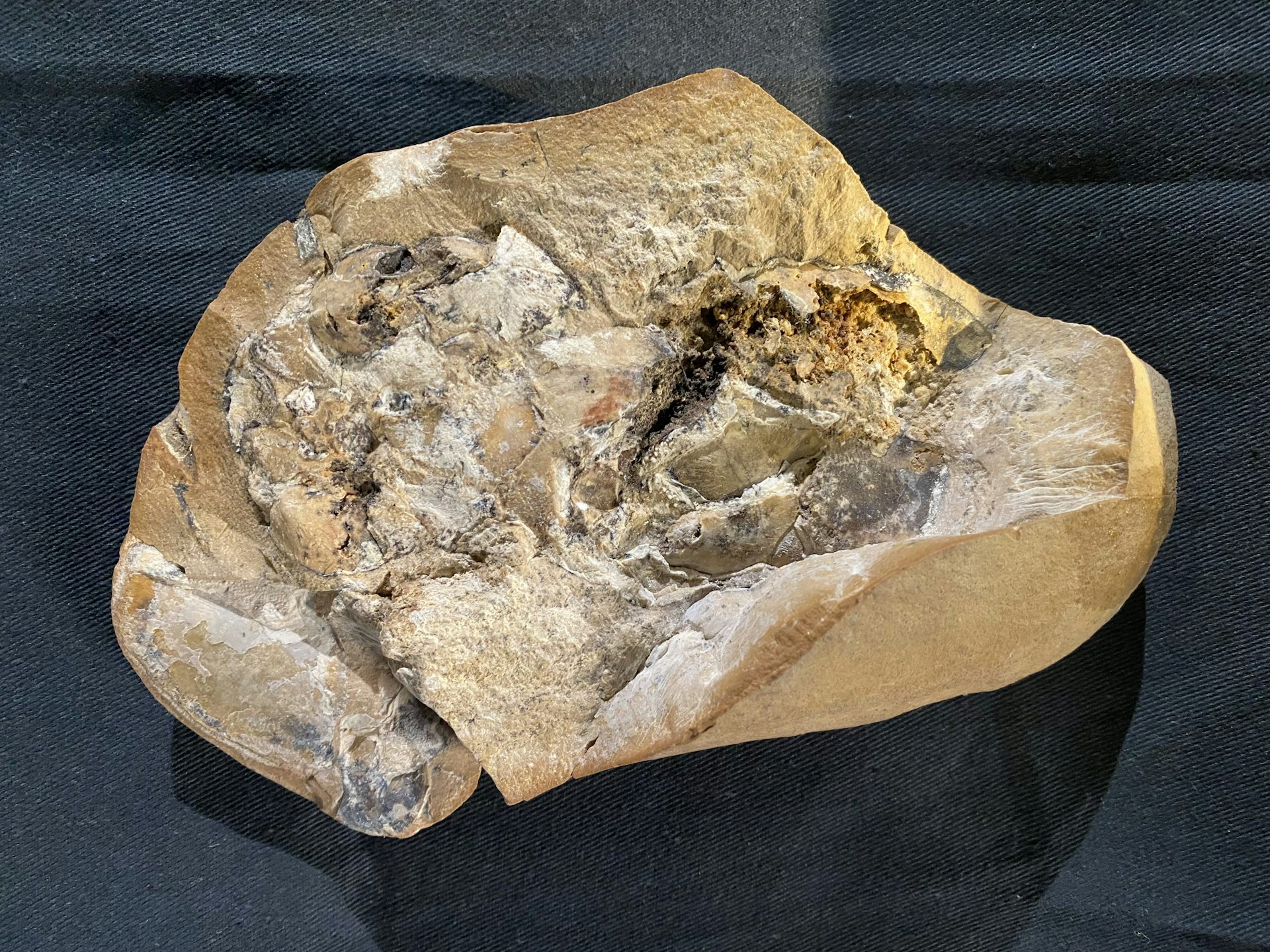
The Gogo fish fossils used in this study were discovered within rocks found in the Kimberley.
Source: Curtin University
Our work used this same technology to show, for the first time, the presence of a liver, stomach and intestines in a Devonian fish. Some of the specimens even showed remnants of their last meal: a crustacean.
We found the soft organs fossilised in an order of placoderms called arthrodires. These were the most common and diverse of all known placoderms, characterised by a unique joint between their head and trunk armour.
The heart of the placoderm
The most exciting find for us was the heart. We found our first placoderm heart using synchrotron imagining.
Then while experimenting with a technology called neutron imaging, we discovered a second heart within a different specimen.
Life must have been nerve-racking in the Devonian seas, because placoderms literally had their hearts in their mouths!
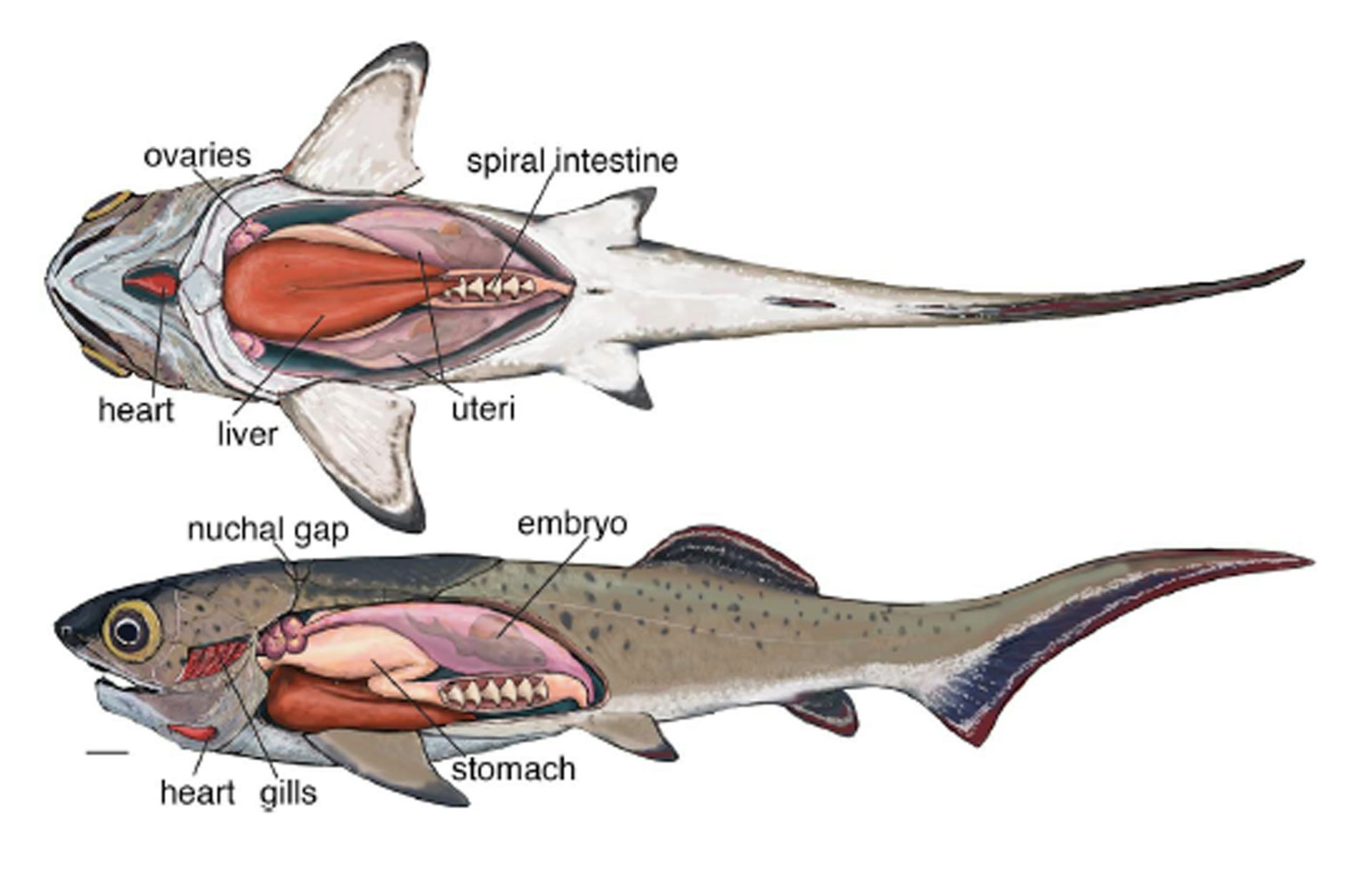
Our new research has revealed the soft organ anatomy of a Devonian arthrodire fish.
Brian Choo, Kate Trinajstic
Fishes that are even more primitive than arthrodires, such as the jawless lamprey, have their heart close to their liver. And the chambers of the heart (called the atrium and ventricle) sit side by side.
On the other hand, arthrodire placoderms had the heart in a more forward (anterior) position, at the back of the throat. And the atrium sat on top of the ventricle – similar to sharks and bony fishes today.
Today, 99% of all living vertebrates have jaws. Arthrodires provide the first anatomical evidence to support the hypothesis that, in jawed vertebrates, the repositioning of the heart to a more forward position was linked to the evolution of jaws and a neck.
But that’s not all. This movement of the heart would also have made room for lungs to develop.
So did placoderms have lungs?
One of the most challenging evolutionary questions today is whether lungs were present in the earliest jawed vertebrates. Although fish have gills, the presence of lungs in some fish can help with buoyancy, which is needed to sink and rise in the water.
Today, lungs are only present in primitive bony fishes such as lungfish and African reedfishes.
More advanced bony fish (such as the teleosts) stay afloat using a swim bladder, whereas sharks have neither lungs nor a swim bladder, and instead use a large fatty liver to help with buoyancy.
But what about ancient placoderms? Previous studies (which were somewhat controversial) suggested lungs were present in a primitive placoderm called Bothriolepis.
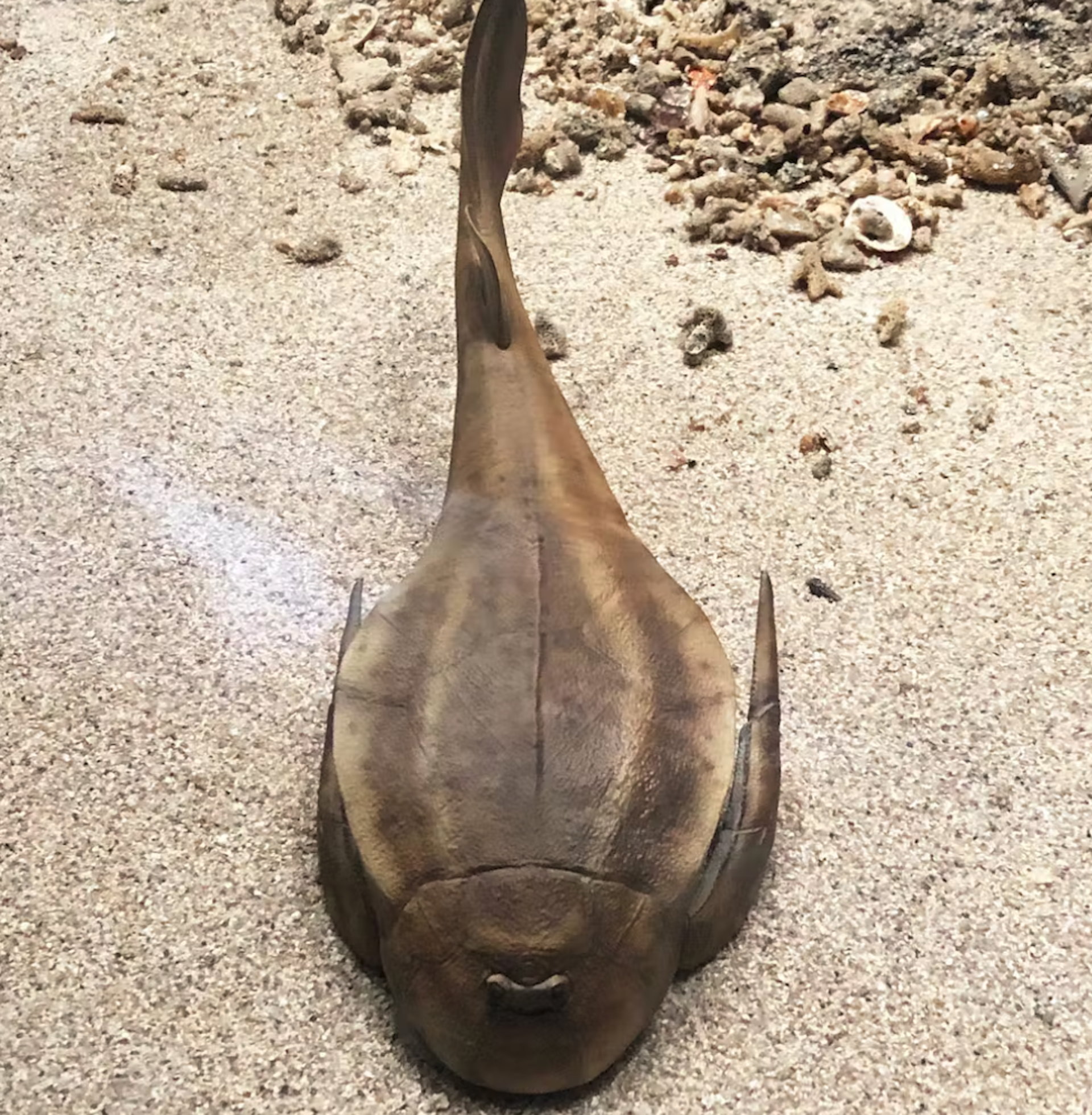
A model of Bothriolepis, which was once thought to have possessed paired lungs.
John Long, Author provided
Our discovery therefore shows a single origin for lungs in bony fishes (osteichthyans). The movement of the heart to a forward position from jawless fishes (Cyclostomata) would have allowed room for lungs to develop in later lineages.
The absence of lungs in placoderms suggests these fish relied on their liver for buoyancy, like modern sharks do.
A crucial site
The preservation of organs is a race against time. In some cases, an animal’s decomposition will aid soft tissue preservation, but too much decomposition and the soft tissues decay away. For excellent preservation the balance needs to be just right.
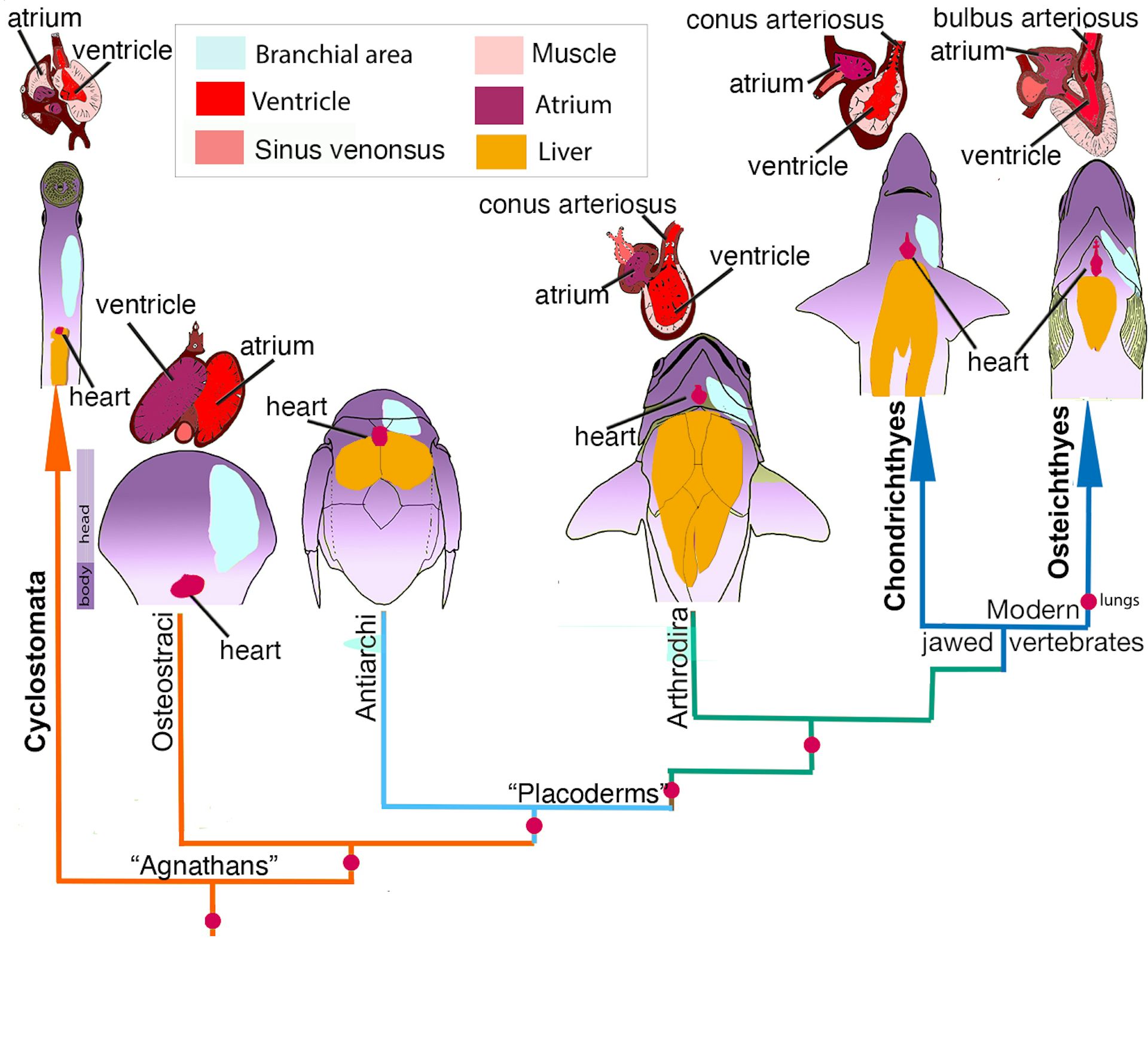
Our new findings on ancient placoderms show the movement of the heart forwards from jawless fishes.
Credit: Kate Trinajstic, Brian Choo, John Long
Being able to make these discoveries before they’re lost forever is crucial if we are to fully understand the early evolution of vertebrates, including the origins of the human body plan.
So beyond our immediate findings, our work has reinforced the significance of the Gogo site in the Kimberley as one of the world’s most important sites for carrying out this work.
AbstractAnd so, once again, casually and without intent, scientists refute the nonsense in the Bible as believed by Creationists. No wonder it is virtually impossible to persuade a Creationist to read real science and almost impossible to find a Creationist who has been educated in biology and/or archaeology unless they have failed at serious science and have been paid to promote the childish superstition by anti-science disinformation organizations.
The origin and early diversification of jawed vertebrates involved major changes to skeletal and soft anatomy. Skeletal transformations can be examined directly by studying fossil stem gnathostomes; however, preservation of soft anatomy is rare. We describe the only known example of a three-dimensionally mineralized heart, thick-walled stomach, and bilobed liver from arthrodire placoderms, stem gnathostomes from the Late Devonian Gogo Formation in Western Australia. The application of synchrotron and neutron microtomography to this material shows evidence of a flat S-shaped heart, which is well separated from the liver and other abdominal organs, and the absence of lungs. Arthrodires thus show the earliest phylogenetic evidence for repositioning of the gnathostome heart associated with the evolution of the complex neck region in jawed vertebrates.
Trinajstic, Kate; Long, John A.; Sanchez, Sophie; Boisvert, Catherine A.; Snitting, Daniel; Tafforeau, Paul; Dupret, Vincent; Clement, Alice M.; Currie, Peter D.; Roelofs, Brett; Bevitt, Joseph J.; Lee, Michael S. Y.; Ahlberg, Per E.
Exceptional preservation of organs in Devonian placoderms from the Gogo lagerstätte
Science 377(6612); pp 1311-1314. DOI: 10.1126/science.abf3289
Copyright © 2022 The Authors.
Published by American Association for the Advancement of Science.
Reprinted with kind permission, under license #5392130225913


No comments:
Post a Comment
Obscene, threatening or obnoxious messages, preaching, abuse and spam will be removed, as will anything by known Internet trolls and stalkers, by known sock-puppet accounts and anything not connected with the post,
A claim made without evidence can be dismissed without evidence. Remember: your opinion is not an established fact unless corroborated.